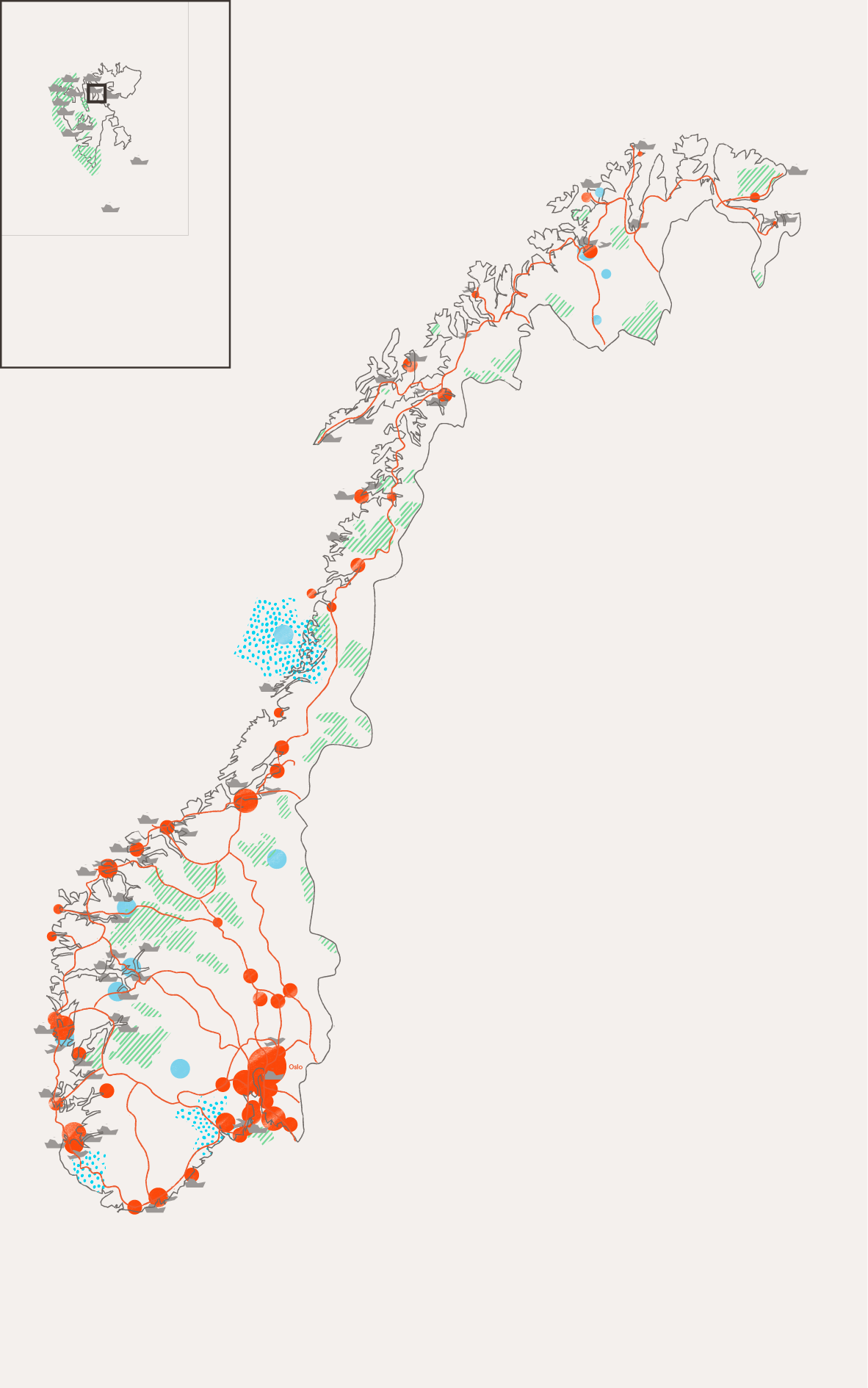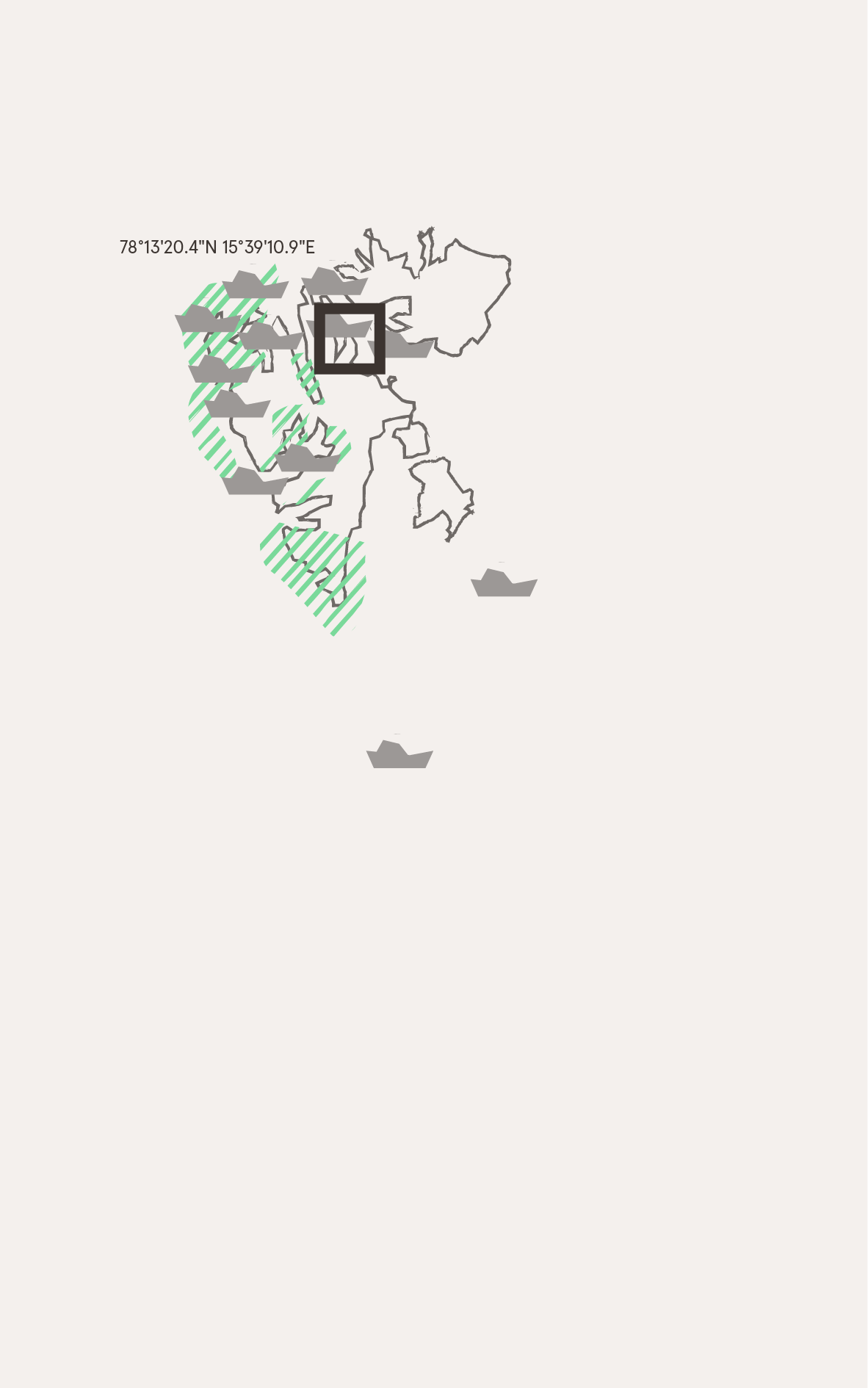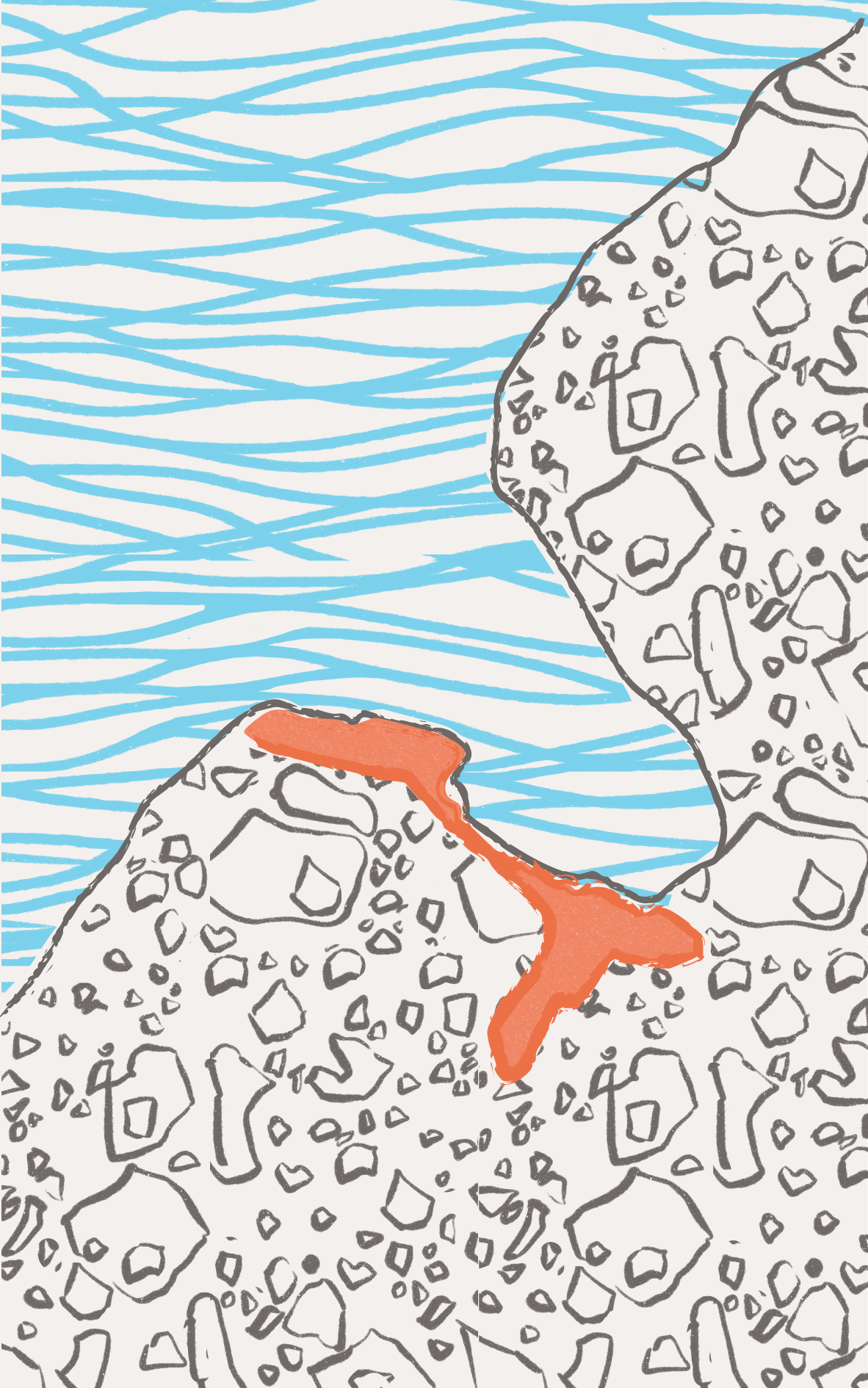Longyearbyen is Norway’s – and the world’s – northernmost sustainable tourist destination, where the High Arctic wilderness begins in the town centre and virtually never ends.

Cities and towns

National parks

UNESCO sites

UNESCO global geoparks

Main roads

Airports

Cruise ports

Case

Infrastructure

Rocks / Cliffs

River / Ocean



Delicate balance between protection and tourism
The small, colourful town is the administrative centre of Svalbard and home to around 2100 people from 50 countries living in unity in tough climatic conditions. Svalbard’s natural landscape is vulnerable and there is a delicate balance to be struck between protection and use. The effects of climate change are more visible in the Arctic than anywhere else. The tourism industry and local politicians have therefore developed their own strategy to help Longyearbyen take appropriate, jointly funded steps to grow the destination in a sustainable way.
Sustainability all year round
The strategy includes a thematic plan for traffic and adventures and outlines how tourism in Longyearbyen can be adapted to avoid damage to nature and to keep people safe. It also contains courses for service employees and a certification programme for guides highlighting the important role they play in the management of natural and cultural heritage. Other initiatives include free loan of bikes and kick sleds, rubbish clean-ups, better waste management and promotion of locally produced goods. Furthermore, summertime cruise ships are encouraged to stay longer and spend a few extra days in the Isfjord to promote slower sailing and reduced fuel consumption. In the winter, the tourism industry is promoting spectacular northern lights experiences. Yet, in the low season from November to January aircraft are normally half full and hotel capacity is under-utilised. Spreading guest traffic throughout the year will promote a healthier economy and more viable local community, with safe, year-round, full-time jobs.
Key facts
- Location
Longyearbyen
- GPS points
8.222327410126 15.653018385816754
- Designer
Schønherr Landscape Architects
- Protection framework
- Estimated number of visitors
- High season
- Low season
- Project owner
- Designer
- Year(s) built
- Materials
- Grants
 James Padolsey
James Padolsey